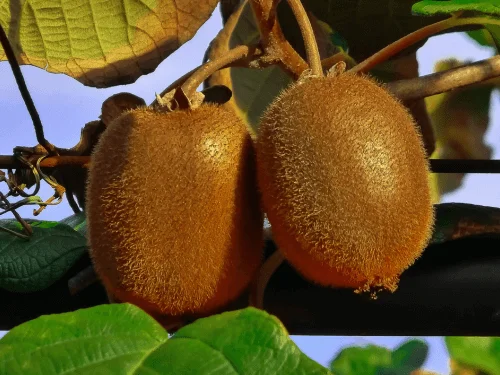White Flowers: Types of White Flowers to Grow in Your Garden

1. Why should I attract ladybugs to my garden?
Ladybugs act as natural pest controllers, consuming aphids, mites, and other harmful insects that damage plants. By inviting them, you reduce pesticide use and encourage a healthier ecosystem.
2. What do ladybugs eat?
Ladybugs primarily feed on aphids, but they also consume whiteflies, mealybugs, scale insects, and other soft-bodied pests that plague vegetable and flower gardens.
3. How can I keep ladybugs in my garden year-round?
To retain ladybugs, provide consistent food sources (such as aphid-prone plants), water, and shelter like mulch, bug hotels, or dense plantings. Avoid using chemical insecticides that can harm them.
1. How long does it take for kiwi vines to produce fruit?
Kiwi vines typically take 3 to 5 years to produce their first crop. If grown from seed, it may take up to 7 years.
2. Do I need both male and female kiwi plants?
Yes, unless you plant a self-fertile variety. Most kiwifruit vines are dioecious, meaning male plants provide pollen, and female plants produce fruit.
3. Can kiwi grow in cold climates?
Yes. Hardy kiwi varieties can withstand extremely cold winters (down to -25°C or -13°F), making them suitable for northern regions.
1. How often should I water my indoor hanging plants?
Most indoor hanging plants prefer to dry slightly between waterings. Water thoroughly when the top inch of soil feels dry, and ensure good drainage to avoid root rot.
2. What’s the best soil for hanging plants?
A well-draining mix is essential. For tropical plants, use a peat or coco coir blend; for succulents, add sand or perlite.
3. Can hanging plants grow in low light?
Yes — Pothos, Philodendron, and English Ivy can thrive in shaded areas, although they’ll grow more slowly.
4. How can I keep hanging plants full and healthy?
Regular pruning encourages bushier growth. Rotate your plants every few weeks so all sides receive light evenly.
White flowers hold a timeless charm in any garden, symbolizing purity, peace, and new beginnings. Whether you're aiming for a serene space, a romantic aesthetic, or a spiritual sanctuary, planting white flowers is a beautiful way to create a calming atmosphere while adding elegance to your landscape. From classic favorites like white roses and lilies to unique varieties such as white cosmos and moonflowers, each type of white flower offers its own special meaning and visual appeal. In this article, we’ll explore a diverse selection of white flowers you can grow in your garden, their symbolic meanings, and essential care tips to help them thrive. Whether you're a beginner gardener or an experienced green thumb, there's a white bloom for every skill level and garden style.
10 Types of White Flowers to Plant in Your Garden
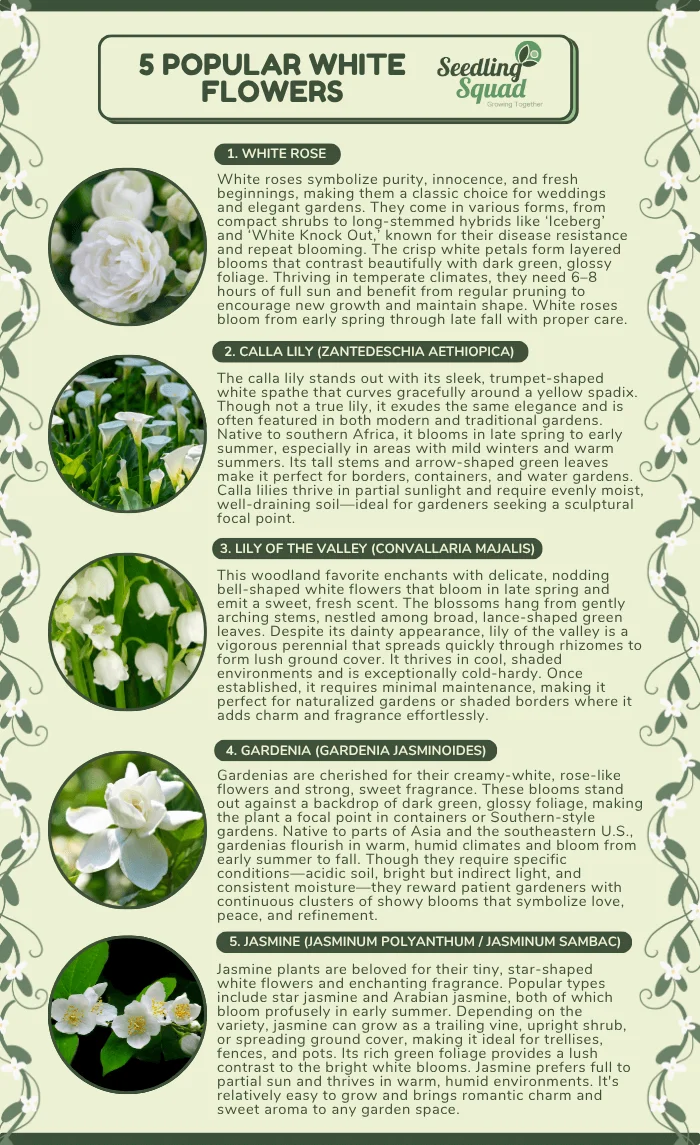
Below are carefully selected white flower varieties, each described in full detail to help you choose what fits best in your garden.
1. White Rose (Rosa spp.)
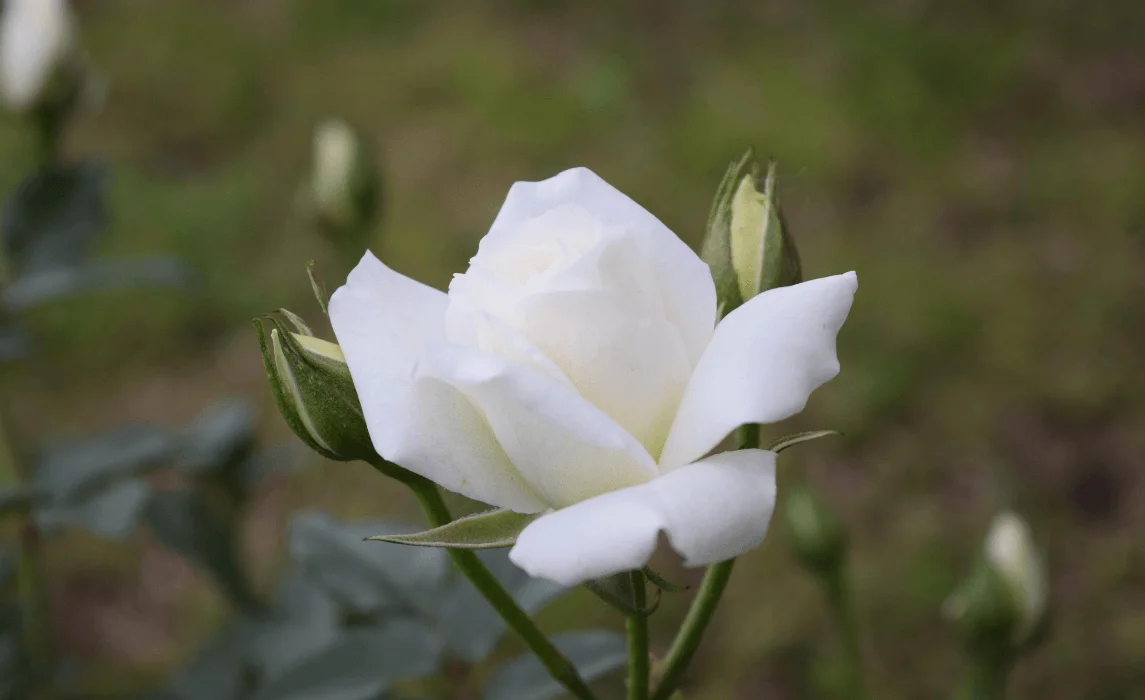
When it comes to classic garden staples, white roses are often the first to come to mind. These elegant blooms have long symbolized purity, new beginnings, and everlasting love, making them a popular choice for weddings and memorial gardens. Most white roses grow as upright shrubs or climbing vines and can reach between 2 to 6 feet tall, depending on the variety. Their pure or creamy white petals unfold in tight spirals, creating a lush, showy look against their dark green foliage.
They thrive in full sun and rich, well-drained soil and should be pruned regularly to promote new growth and maintain a neat shape. Due to their variety in form—some are perfect for cutting gardens, others great for hedges—they suit gardeners looking for versatility.
Soil: Loamy, well-drained
Water: 1–2 deep waterings per week
Light: Full sun (6+ hours)
Humidity: Moderate
Fertilizer: Rose fertilizer every 4–6 weeks
Temperature: 60–75°F (15–24°C)
USDA Zone: 5–9
2. Calla Lily (Zantedeschia aethiopica)

The Calla Lily is renowned for its elegant, trumpet-shaped blooms that look almost sculptural. Native to southern Africa, this flower is technically not a lily but shares the showy white aesthetic often associated with true lilies. With their long green leaves and bold, pure white spathes, callas make a dramatic statement whether grown in borders, containers, or water gardens.
Each flower rises on a long stem, making them ideal for floral arrangements. Callas thrive in moist, well-drained soil and partial shade. They do well in warm, humid climates and must be lifted in colder zones unless grown in pots. They're a great fit for gardeners who enjoy bulb plants and want a bloom that bridges late spring to early summer.
Soil: Moist, rich, well-drained
Water: Keep soil consistently moist
Light: Partial sun to light shade
Humidity: High
Fertilizer: Balanced liquid fertilizer every 2–3 weeks
Temperature: 60–80°F (16–27°C)
USDA Zone: 8–10
3. White Hydrangea (Hydrangea macrophylla or Hydrangea paniculata)
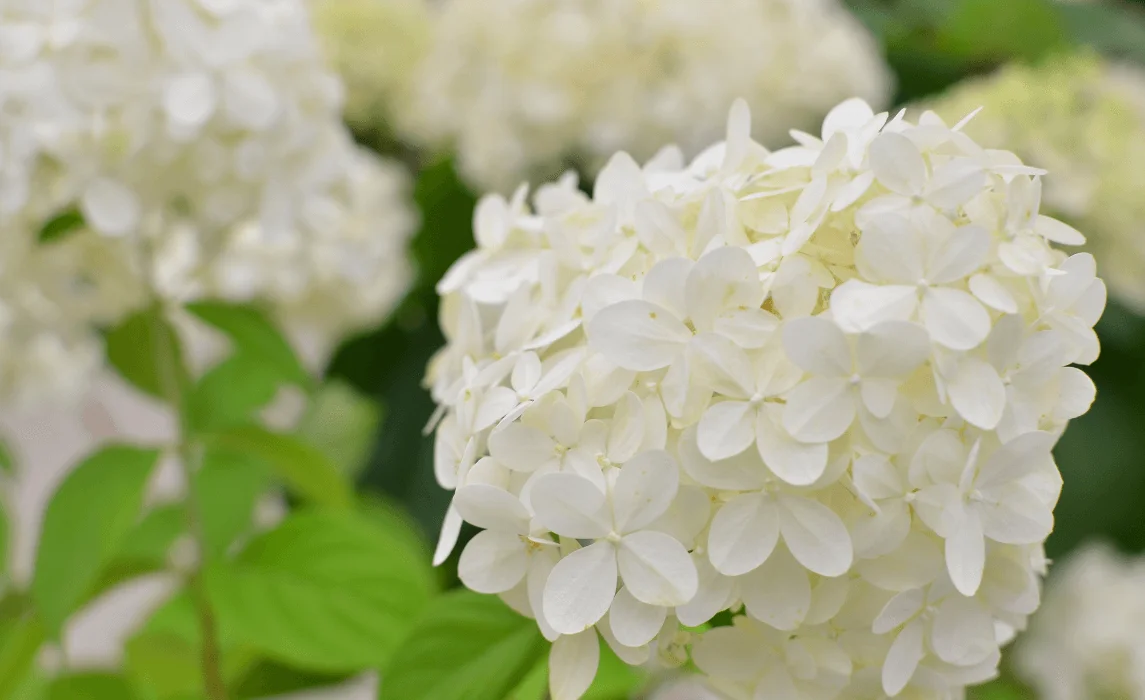
White hydrangeas are beloved for their voluminous, cloud-like flower clusters that add instant elegance and softness to garden landscapes. Depending on the variety, these deciduous shrubs can grow anywhere from 3 to 10 feet tall and produce large globe-shaped or conical blooms that transition subtly from pure white to soft green or blush as the season progresses.
There are several types of white hydrangeas, including ‘Annabelle’ (a smooth hydrangea with massive mophead blooms) and ‘Limelight’ (a panicle variety known for its upright, cone-shaped flowers). These plants thrive in rich, well-drained soil and do best in areas with morning sun and afternoon shade, though panicle types can tolerate more sunlight. They’re perfect for mixed borders, foundation plantings, or as standalone accent shrubs. Their long-lasting blooms are also excellent for fresh or dried floral arrangements.
Soil: Moist, rich, well-drained, slightly acidic
Water: Deeply 1–2 times a week
Light: Morning sun, afternoon shade (some varieties tolerate full sun)
Humidity: Moderate
Fertilizer: Slow-release or balanced fertilizer in spring
Temperature: 60–75°F (15–24°C)
USDA Zone: 3–9 (depending on variety)
4. Gardenia

The Gardenia is a classic Southern favorite, celebrated for its intoxicating fragrance and beautiful white blooms that lend a touch of romance to any space. Native to tropical and subtropical regions of Africa, Asia, and the Pacific Islands, this evergreen shrub is often found gracing walkways and patios where its scent can be fully appreciated. Gardenias produce large, creamy white flowers with layers of overlapping petals that resemble roses, set against glossy, dark green leaves that stay attractive all year.
These showy white flowers thrive in humid, warm environments and require acidic, well-drained soil to flourish. Gardenias are best planted in locations with morning sun and afternoon shade, as too much direct heat can stress the plant. Regular feeding, pruning after flowering, and consistent moisture help them perform well into the early summer. Because of their slightly fussy nature, they’re best suited to intermediate gardeners who enjoy tending to plants that offer high reward for careful care.
Soil: Acidic, rich, well-draining
Water: Keep moist but not soggy
Light: Morning sun, afternoon shade
Humidity: High
Fertilizer: Monthly with acidic fertilizer
Temperature: 65–75 °F (18–24 °C)
USDA Zone: 8–11
5. Lily of the Valley
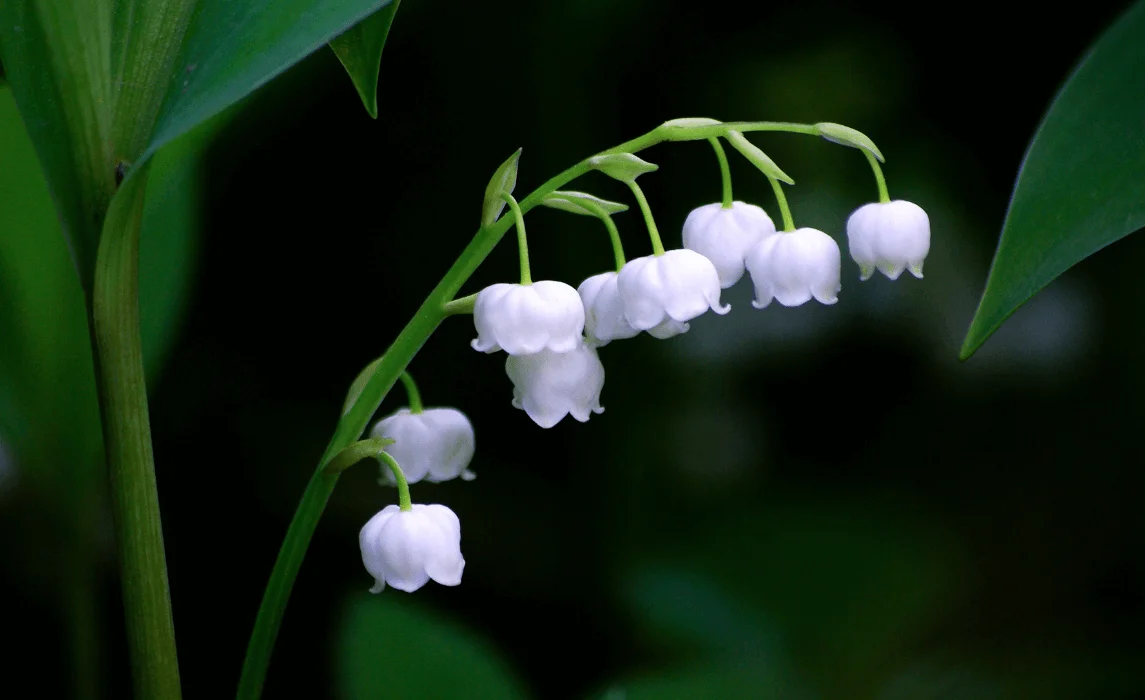
With their charming clusters of bell-shaped flowers that dangle like tiny white pearls, the Lily of the Valley has long been revered for its delicate appearance and sweet fragrance. Despite its innocent look, this plant is quite hardy and can naturalize in the right environment, spreading over time through rhizomes. Its small flowers bloom in early spring, nestled among slender, lance-shaped green leaves that create a gentle woodland aesthetic.
Thriving in shady, cool conditions, Lily of the Valley is ideal for planting beneath trees or in woodland gardens. It prefers moist, humus-rich soil and benefits from a layer of mulch to retain moisture. Although all parts of the plant are toxic if ingested, it’s safe to grow in gardens with proper supervision. It’s a wonderful option for gardeners who want a low-maintenance groundcover that delivers both visual appeal and a nostalgic scent, especially those in cooler climates.
Soil: Moist, rich, slightly acidic
Water: Keep evenly moist
Light: Partial to full shade
Humidity: Moderate
Fertilizer: Compost-rich soil; optional balanced fertilizer in spring
Temperature: 60–70 °F (15–21 °C)
USDA Zone: 3–8
6. White Camellia
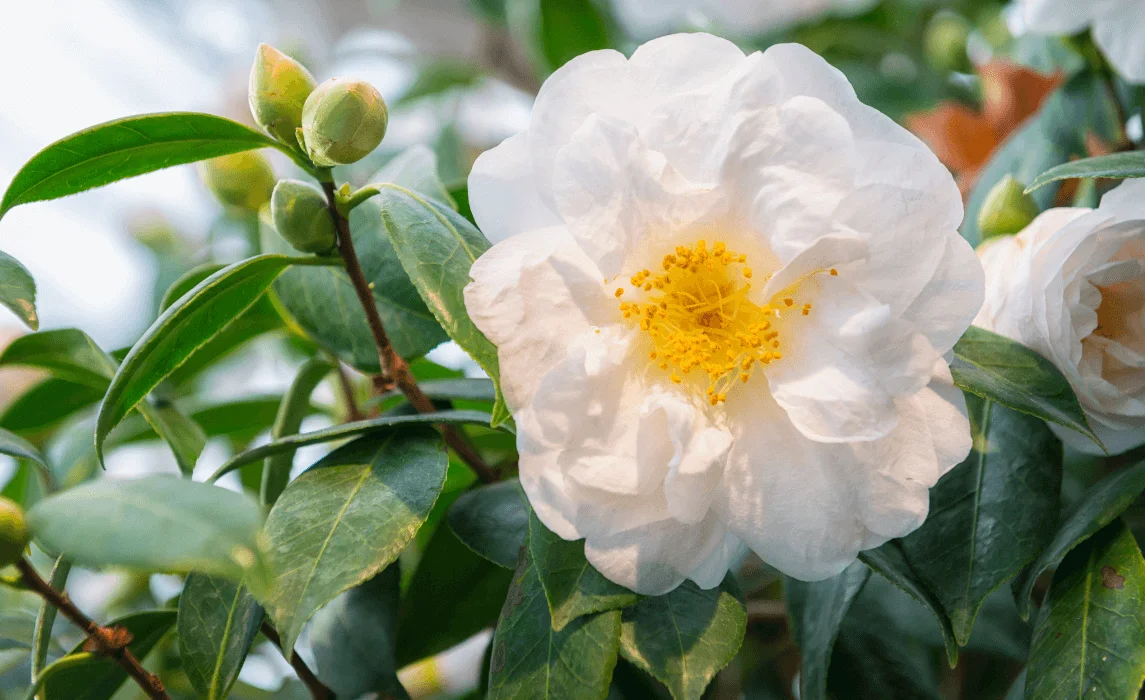
The White Camellia holds symbolic significance, often representing admiration and perfection. Native to eastern and southern Asia, this evergreen shrub produces showy clusters of large white or pink blooms, typically unfolding in late fall or late winter to early spring, depending on the species. Its blooms are characterized by layered, ruffled petals surrounding golden centers, which contrast beautifully with its dark green, glossy leaves.
Camellias prefer acidic, well-drained soil and perform best in partially shaded areas with protection from harsh afternoon sun. They thrive in humid environments and require consistent watering, especially during blooming periods. Pruning should be done after flowering to maintain a compact shape. These shrubs are perfect for formal gardens, foundation plantings, or containers, making them ideal for experienced gardeners who enjoy long-lasting floral displays throughout the cooler months.
Soil: Acidic, well-drained
Water: Keep consistently moist
Light: Partial shade
Humidity: High
Fertilizer: Acidic fertilizer in spring
Temperature: 50–65 °F (10–18 °C)
USDA Zone: 7–9
7. Foxglove
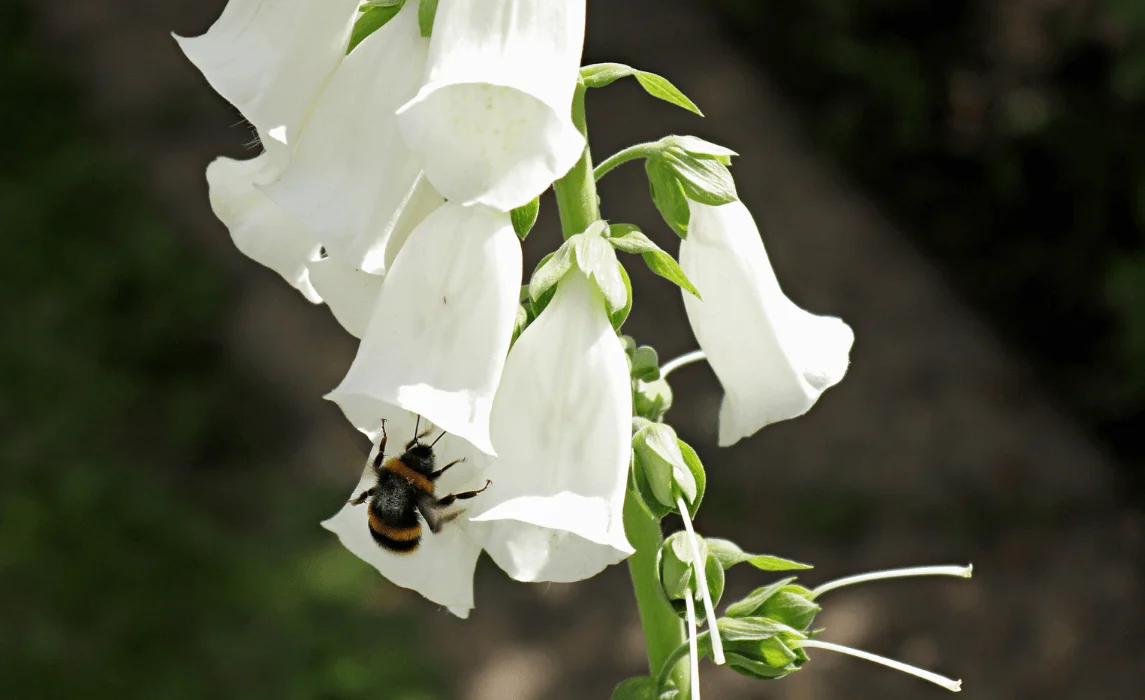
Foxgloves are tall, stately plants that bring vertical interest to any garden. Though most commonly seen in purple or pink, some come in white, adding elegant contrast to colorful flower beds. Each spike is covered in bell-shaped flowers with speckled throats, rising on long stems up to 5 feet tall. Their foliage is a lush rosette of green leaves, making them attractive even before blooming begins.
Native to Europe, foxgloves prefer cooler climates and well-draining soil. They thrive in partial shade and bloom from late spring into early summer, attracting pollinators such as bees and hummingbirds. Due to their toxicity if ingested, they’re best suited for ornamental borders away from pets and children. Gardeners with an eye for structure and drama will enjoy growing foxgloves in cottage gardens or naturalized settings.
Soil: Moist, well-draining
Water: Regular; allow topsoil to dry slightly
Light: Partial shade
Humidity: Moderate
Fertilizer: Compost or slow-release feed
Temperature: 60–70 °F (15–21 °C)
USDA Zone: 4–9
8. Star Jasmine
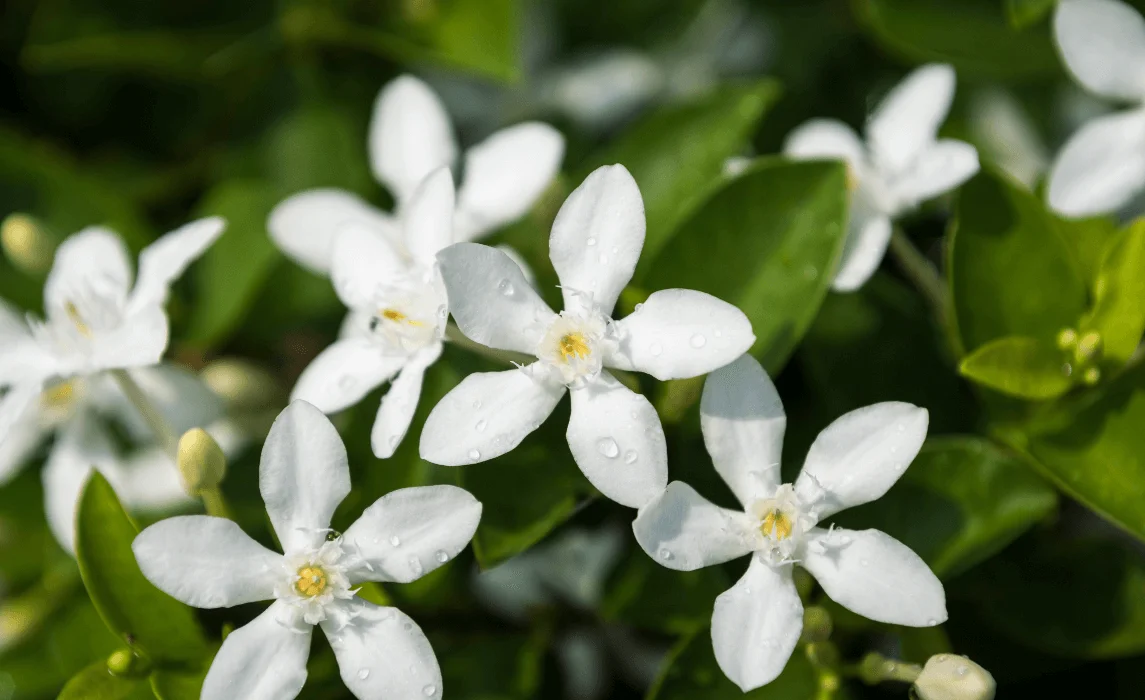
Though not a true jasmine, Star Jasmine is a vigorous vine that produces small flowers shaped like stars with a powerful, sweet fragrance. Each pure white bloom appears against a backdrop of dark green, leathery leaves, and the plant is often trained to grow on trellises or fences. When in full bloom, it creates a showy display that adds a romantic vibe to gardens or patios.
This fast-growing climber thrives in warm climates and performs best in full sun to partial shade, blooming in late spring through early summer. It prefers well-drained soil and benefits from occasional pruning to keep it tidy. Ideal for vertical gardening, star jasmine suits those who want to add a touch of elegance and fragrance to small spaces, fences, or archways.
Soil: Well-drained, loamy
Water: Moderate; allow to dry slightly between watering
Light: Full sun to partial shade
Humidity: Moderate
Fertilizer: Balanced feed monthly during growing season
Temperature: 60–80 °F (15–27 °C)
USDA Zone: 8–11
9. Chrysanthemum

Chrysanthemums, often simply called “mums,” are staples in fall gardens, beloved for their wide variety of colors and prolific blooms. While many mums are yellow, orange, or red, there are stunning types of white flowers within this family that bloom in showy clusters. Each flower head consists of tightly packed petals and sits atop strong, bushy stems, creating a compact, uniform look.
Native to Asia and northeastern Europe, chrysanthemums prefer cooler climates and well-drained soil enriched with organic matter. They need full sunlight for at least 5 hours a day and should be pinched back in summer to encourage bushiness. Their long-lasting blooms are ideal for cutting gardens, and the plants themselves are perfect for containers or borders. Gardeners looking for vibrant fall interest and easy maintenance will find mums especially satisfying.
Soil: Well-drained, fertile
Water: Moderate, don’t overwater
Light: Full sun
Humidity: Moderate
Fertilizer: Every 3–4 weeks during growth
Temperature: 60–70 °F (15–21 °C)
USDA Zone: 5–9
10. Gerbera Daisies
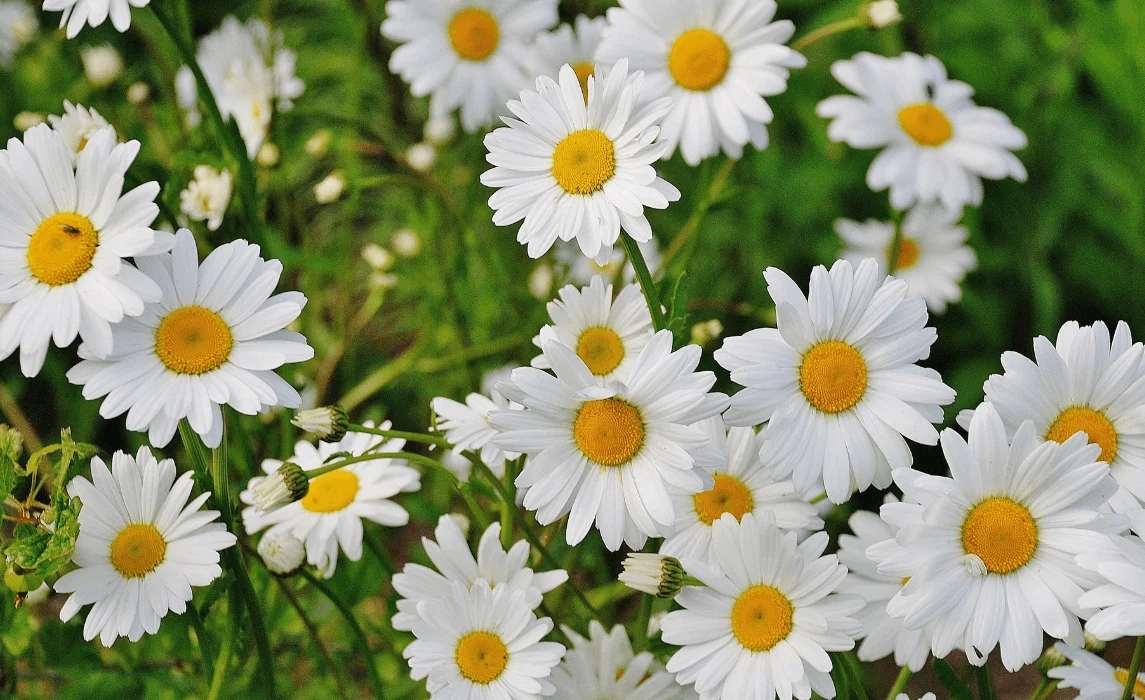
Gerbera daisies are known for their large white blooms, although they come in a variety of colors ranging from yellow to pink to red. Native to South Africa, these cheerful flowers feature single or double rows of petals radiating from a central disc, and they bloom from spring well into fall. Their long stems and dark green leaves make them standout additions to vases and garden beds alike.
They thrive in mild climates, preferring well-drained soil, full sun, and good air circulation to prevent fungal issues. These daisies are ideal for cutting gardens, as their stems are sturdy and the blooms last long. Gardeners seeking continuous color and clean, classic lines in their flower beds will find Gerberas rewarding, especially when deadheaded regularly to promote new blooms.
Soil: Rich, well-drained
Water: Moderate; water at base
Light: Full sun
Humidity: Low to moderate
Fertilizer: Liquid bloom booster every 2 weeks
Temperature: 55–75 °F (13–24 °C)
USDA Zone: 8–11
FAQs About White Flowers
Q: What do white flowers symbolize?
A: White flowers often represent purity, innocence, remembrance, and new beginnings.
Q: Do white flowers attract pollinators?
A: Yes! Many white flowers such as anemones, lilies, and gardenias attract bees, butterflies, and moths.
Q: Are white flowers more prone to disease?
A: Not inherently, but some white varieties (like roses or gardenias) require more careful monitoring for mildew or pests.
Q: Can white flowers tolerate full sun?
A: Many can—like tulips, peonies, and white lilies. Others, such as lily of the valley and anemones, prefer part shade.
Q: Which white flowers are best for beginners?
A: Start with tulips, peonies, or lily of the valley—they’re low maintenance and very forgiving.







